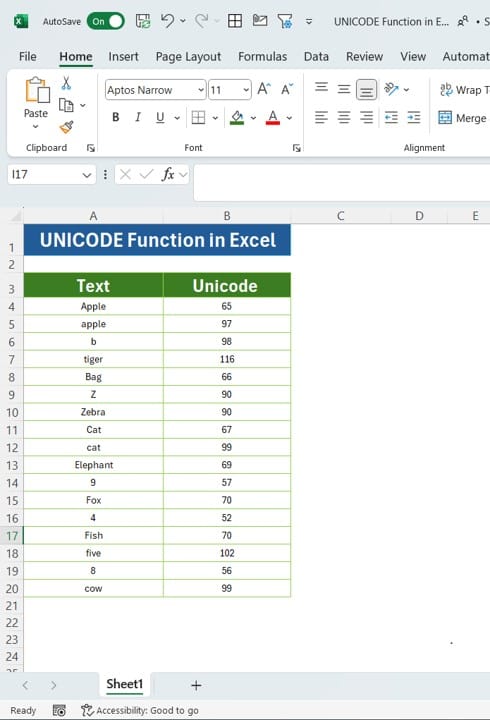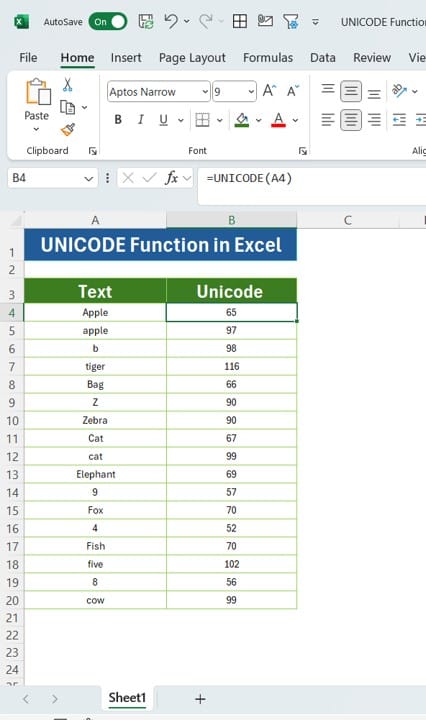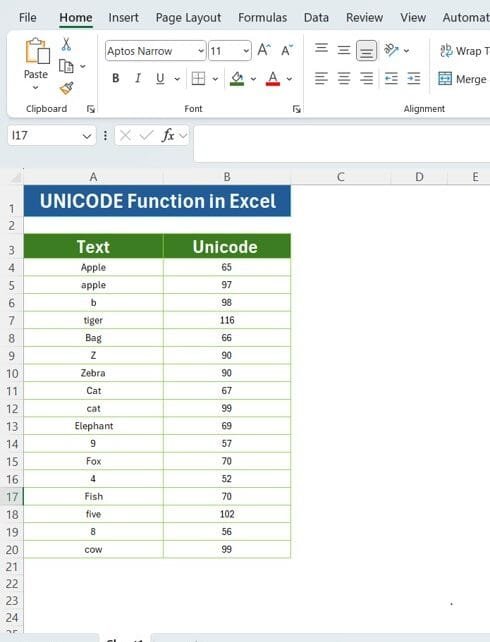Have you ever needed to figure out the Unicode value of a letter or symbol in Excel? If so, the UNICODE Function in Excel is your new best friend! In this blog post, we’ll walk through everything you need to know about using the UNICODE function in Excel. Don’t worry—it’s much easier than it sounds! By the end of this post, you’ll be able to confidently convert any text into its UNICODE Function in Excel value. Let’s jump right in!
What is the UNICODE Function?

First things first, let’s start with the basics. The UNICODE function in Excel is designed to give you the Unicode number (or code point) for the first character in a text string. This might sound technical, but it’s super helpful when you need to identify specific characters, especially for symbols or non-Latin alphabets.
For example, if you type the letter “A” into Excel and use the UNICODE function, it will tell you that the Unicode value of “A” is 65. Cool, right?
How Does the UNICODE Function Work?
The great news is that using this function is simple! Here’s the syntax:
=UNICODE (text)
text: This is the character or string you want to convert to a Unicode value. The function only looks at the first character in the string.
Let’s go ahead and apply this in a real-world example to see how it works.
Sample Data to Try Out
To make things more interesting, let’s say you have a dataset with two columns—one containing text and the other showing the corresponding Unicode values. Below is an example of what your data might look like:
How to Use the UNICODE Function Step by Step

Now that you’ve got your data ready, let’s see how to use the UNICODE Function in Excel to get the Unicode values for each text entry.
First, choose the cell where you want to display the Unicode value. Let’s start with the word “Apple” in cell A4.
Next, in a blank cell (for instance, B4), enter the formula:
=UNICODE(A4)
Finally, hit Enter. You should see the number 65 pop up, which is the Unicode value for the letter “A.” Pretty neat, right?
But don’t stop there! You can easily copy the formula down the entire column to apply it to the rest of your dataset. Before you know it, you’ll have a list of Unicode values for all your text.
See how easy that was? You’ve now got the Unicode values for each piece of text in your data.
Why Should You Use the UNICODE Function?
There are several reasons you might want to use the UNICODE function in Excel, especially when working with data that contains special characters or when you need to perform text-based analysis.
Here are just a few benefits:
- Character Identification: Easily find out the Unicode values of letters, numbers, and symbols.
- Data Validation: Confirm that your data matches the required format by checking the Unicode values.
- Data Standardization: Ensure consistency across your dataset by using Unicode values to compare and validate characters.
Wrapping It Up
The UNICODE function is an easy but powerful tool when you need to convert text into Unicode values in Excel. Whether you’re working with letters, numbers, or symbols, this function can handle it all. Now that you know how to use the UNICODE function, try it out on your own data. You’ll be amazed at how helpful it can be!
Visit our YouTube channel to learn step-by-step video tutorials
View this post on Instagram
Click hare to download the practice file



